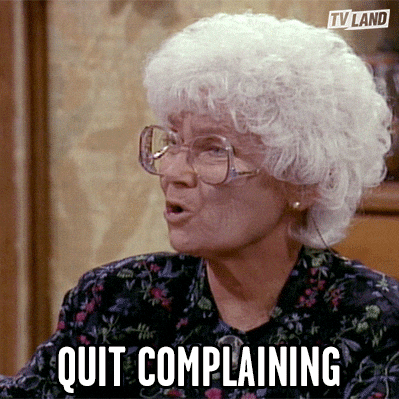
Shut It Down by Doc McIntyre
Dear Doc,
How do I handle the constant complainer? As the leader, I know I’m supposed to be compassionate and be a good listener, but this complaining is wearing me out?
Help!
Exhausted
_____________
Dear Exhausted,
As the leader, you need to be a compassionate listener the first time. On the second, third, and fourth times, you need to shut that stuff down!
·Redirect the complaining – “I’m ready to brainstorm solutions whenever you are.”
·You don’t have to be mean, but you need to be definite – “I’m out as your venting partner.”
These may feel confrontational, but as a leader, you need to be okay with a little constructive confrontation.
It’s your job to protect the team vibe. And constant complaining creates a horrible vibe.

Breaking a Bad Culture
Let's face it—there are some very unhealthy cultures in today's workplace. These can range from the mind-numbingly boring ("YAWN, I'd rather watch paint dry") to the downright unbearable ("I'd rather snort fire ants than spend another day here"). Unfortunately, I’ve seen my fair share of both bad and good examples. From my perspective, no amount of money is worth staying in a toxic work environment. Life is too short not to enjoy what you do for a living. So why is it so hard to create a healthy culture? There are many reasons, but let's start with just one: it’s hard to change.
I once read that the hardest part about breaking any habit is not doing what you did yesterday. This can be something as small as drinking too much coffee or as big as smoking cigarettes. While addiction is a complex topic, and I don't want to diminish the power of nicotine, it’s still a choice to light up the next cigarette. Humans are creatures of habit. For most of us, the first 30 minutes of our day follow a predictable routine. Try mixing it up for fun and see how it feels. It might feel good to add a little variety, but making a change that sticks is much harder.
For proof, consider this: only 8% of people who make New Year's resolutions accomplish their goals, according to data from Google by iQuanti. 77% of people abandon their resolutions after just 12 days. This is true even when we know that what we’re doing is bad for us, much less when trying to do something good that takes a while to show results.
Now, imagine what that’s like for a group of people conditioned to think the current way is the only way. Add leaders who are so locked into their thinking that they won’t entertain new ideas, and you have a recipe for a stagnant, mediocre culture. When we engage with clients, the people at the workplace often see and articulate the problems. They know what’s broken, why it’s broken, and even how it affects the team. So if everyone knows what’s wrong, why don’t they fix it?
It’s really hard to not do what you did yesterday!
Imagine doing the same things the same way for over 10 years. With all this inertia, how do we break through and create something better? Here are some simple steps:
-
Get Clear on What Needs to Change and Why
-
Articulate these points clearly and succinctly. This is a good start. Remember, Rome wasn’t built in a day, so don’t try to fix everything at once. Pick one thing or area to focus on and keep it contained.
-
Communicate the Change
-
Explain what is changing, why it’s changing, who is involved, how long it will take, what is needed from everyone, and what’s in it for them. Most people can handle a lot as long as they understand what’s happening. It’s when they are left to make up their own conclusions that things get ugly.
-
Understand Where You Are and Where You Want to Go
-
Spend time understanding the problem before jumping in to fix it. This step is often overlooked because solving the problem seems more exciting than studying it.
-
Implement Changes Gradually
-
If you force change on people, they will resist. Change imposed is change opposed. Give people time to adjust, express their thoughts, and vocalize their opinions. They will resist the change much less if they have time to acclimate.
By spending time on the front end of the change process, you will spend less time frustrated during it. Understand what you’re trying to do and why it’s important before doing anything else, and communicate this to all interested parties. Then, execute the change with the involved parties and give them time to keep up. In our experience, this approach greatly increases the chances of successful change implementation.

Interested to see how your organization stacks up against world-class manufacturing? Take the quick survey here.
